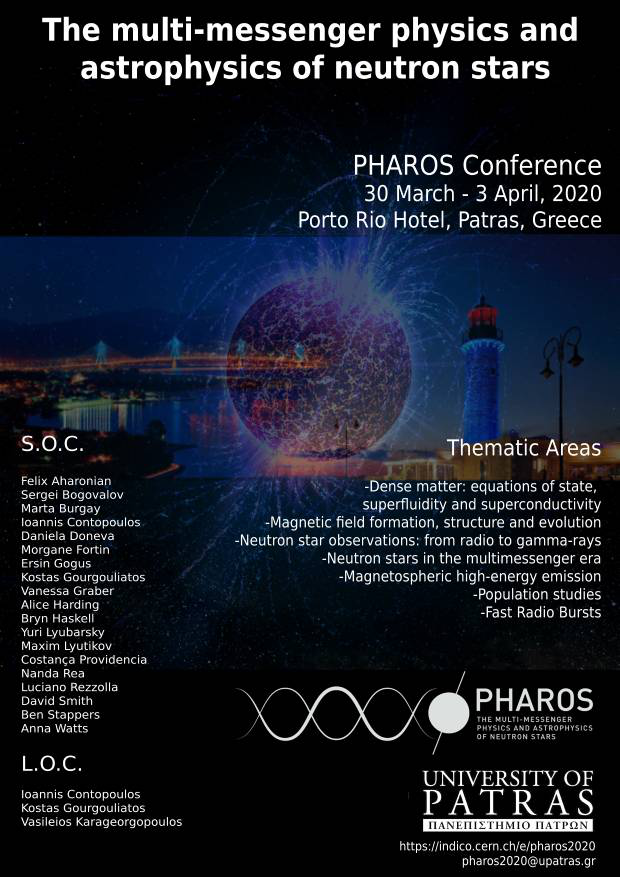Speaker
Description
In Castillo et al. (2017}, the first simulations of ambipolar diffusion in a spherical neutron star cores were reported, contributing to the understanding of the long-term evolution of their magnetic fields. In that work the NS interior is modeled as a charged-particle fluid of npe-matter, with a uniform and motionless background of neutrons that exerts a collisional drag force on the former. A more realistic approach is being extensively studied by Castillo et al. (in preparation), where a two-fluid simulation is performed including a dynamical neutron background. In this work we present preliminary results considering the evolution of the interior temperature, also taking into account the effect of $\beta$-decays. We are studying separately two different temperature regimes. One of these is the strong-coupling regime, at the early epoch of the star's life, with interior temperature $T >\sim 10^{9}\,K$, where charged particles and neutrons are strongly coupled to each other by collisions, but they can convert into each other by weak interactions (Urca reactions). Particularly, we are focusing on small departures from chemical equilibrium quantified by $\Delta \mu:=\mu_{n}-\mu_{e}-\mu_{p}$, the so called "sub-thermal" regime ($\Delta \mu/k_{B}T<\sim 3$) characterized by a net neutrino cooling. The other is the \textit{weak-coupling regime}, relevant for late times of the star's life with temperatures $T <\sim 5 \times 10^{8}\,K$, where the weak interactions are essentially frozen and the cooling and heating mechanisms are due to photons emitted from the stellar surface and energy released by the friction between the two species (i.e. due to ambipolar diffusion), respectively.

